#silk canvas
Explore tagged Tumblr posts
Text
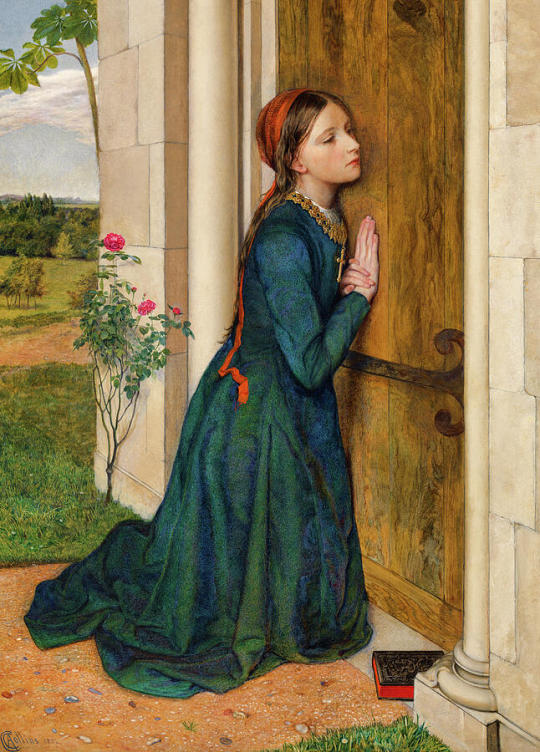
The Devout Childhood of St. Elizabeth of Hungary
Artist: Charles Allston Collins (British, 1828-1873)
Date: 1851-1852
Medium: Oil on canvas
Collection: Detroit Institute of Arts, Detroit, MI, United States
Description
Although never a member of the Pre-Raphaelite Brotherhood, Charles Allston Collins adhered to their stated mission of selecting subjects that conveyed “heartfelt” ideas rendered through the close study of nature. Here, he portrays the exemplary piety of Elizabeth of Hungary, who, when arriving at the church before the priests had opened the door, fell to her knees at the threshold to begin her devotions. While the story of the thirteenth-century saint derives from Alban Butler’s The Lives of the Saints (1756–59), the visual details - from the wooden door’s grain to the shot silk dress - reflect Collins’s accurate observations of his visual world. He also adopted the arduous Pre-Raphaelite practice of painting on a white wet ground to heighten his brilliant colors.
#painting#genre art#oil on canvas#fine art#oil painting#artwork#pre raphaelite art#female figure#kneeling#door#rosebush#bible#devout childhood#st. elizabeth of hungary#blue dress#cross pendant#building#church#wooden door#silk dress#pre raphaelite style#british culture#british art#charles allston collins#british painter#european art#19th century painting#detroit institute of arts
38 notes
·
View notes
Text

Jane Fleming, Later Countess of Harrington
Artist: Sir Joshua Reynolds (British, 1723-1792)
Date: c. 1778-1779
Medium: Oil on canvas
Collection: The Huntington Library, Art Museum, and Botanical Gardens, San Marino, CA, United States
Description
Contemporary audiences would have recognized Jane's outstretched hand and arm as a conventional theater gesture that actors assumed when about to speak. Reynolds also refers to contemporary fashion, depicting Jane's hair ornamented by the ostrich feathers that the Duchess of Devonshire had recently made popular.
#portrait#oil on canvas#full length portrait#woman#standing#terrace#cloudy blue sky#classical rose robe#rose silk band#coif#elegant#british culture#ostrich feathers#hair ornament#duchess of devonshire#sir joshua reynolds#british painter#oil painting#artwork#18th century painting#european art
29 notes
·
View notes
Text
Warhol & Liza

Liza Minnelli, 1978.

Liza Minnelli, 1977.

Judy Garland and Liza Minnelli, 1979.

#warhol portraits#andy warhol poloroids#liza with a z#liza minnelli#studio 54#warhol factory#pop art#judy garland#andy warhol#1970s#silk screen#canvas#john lennon
126 notes
·
View notes
Text

Queen Alexandra (1844-1925)
Artist: François Flameng (French, 1856-1923)
Date: 1908
Medium: Oil on canvas
Collection: Royal Collection Trust, United Kingdom
Alexandra of Denmark
Alexandra of Denmark (Alexandra Caroline Marie Charlotte Louise Julia; 1 December 1844 – 20 November 1925) was Queen of the United Kingdom and the British Dominions, and Empress of India, from 22 January 1901 to 6 May 1910 as the wife of Edward VII.
Alexandra's family had been relatively obscure until 1852, when her father, Prince Christian of Schleswig-Holstein-Sonderburg-Glücksburg, was chosen with the consent of the major European powers to succeed his second cousin Frederick VII as King of Denmark. At the age of sixteen, Alexandra was chosen as the future wife of Albert Edward, Prince of Wales, the son and heir apparent of Queen Victoria. The couple married eighteen months later in 1863, the year in which her father became king of Denmark as Christian IX and her brother William was appointed king of Greece as George I.
Alexandra was Princess of Wales from 1863 to 1901, the longest anyone has ever held that title, and became generally popular; her style of dress and bearing were copied by fashion-conscious women. Largely excluded from wielding any political power, she unsuccessfully attempted to sway the opinion of British ministers and her husband's family to favour Greek and Danish interests. Her public duties were restricted to uncontroversial involvement in charitable work.
On the death of Queen Victoria in 1901, Albert Edward became King-Emperor as Edward VII, with Alexandra as queen-empress. She became queen mother on Edward VII's death in 1910, at which point their son George V acceded to the throne. Alexandra died aged 80 in 1925.
Painting Description
This strikingly sophisticated and composed portrait of Queen Alexandra was painted by the French artist François Flameng in 1908. It is one the highlights of early 20th century royal portraiture. The Queen sits upon a stone step, gazing directly at the viewer; dressed in a white silk dress, diaphanous gauze suggested about her arms and shoulders. She is wearing Queen Victoria's small crown, the riband and star of the Order of the Garter, her collier résille necklace, made by Cartier in 1904, and the Koh-i-nûr in its brooch setting. A wooded landscape and suggestion of a building or castle in the background.
#portrait#painting#fine art#queen alexandra#francois flameng#french painter#full length#royal portraiture#stone step#white silk dress#small crown#riband#star of the order of the garter#necklace#brooch#wooded landsape#british monarchy#british history#french art#european art#oil on canvas#1908#20th century painting#artwork#oil painting#queen of the united kingdom#british empire#french culture#danish nobility
24 notes
·
View notes
Text
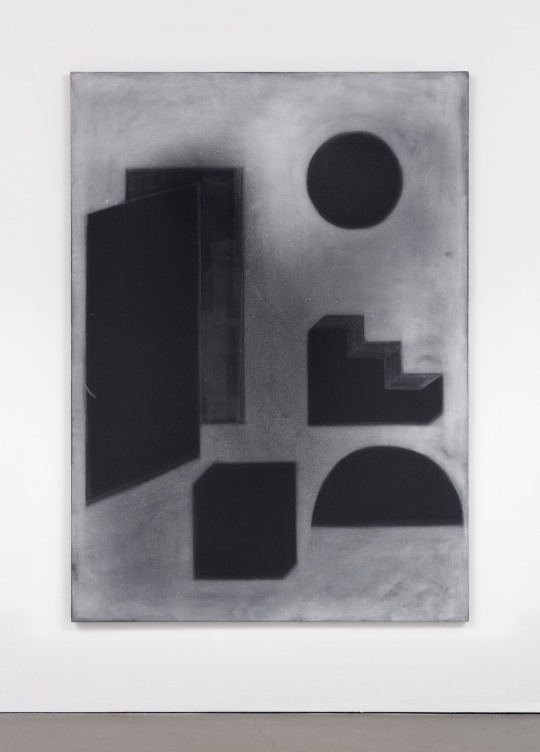
Silke Otto-Knapp Normalbühne (after Schwitters) II 2017 Watercolor on canvas 51.1875 x 70.875 (130 x 180 cm)
85 notes
·
View notes
Text

okay his outfit has really been bothering me for absolutely ages so here. bastard man.
#warhammer rogue trader#pasqal haneumann#pasqal rogue trader#when i say its been bothering me. know i am too well informed about fabrics and sewing#so i need it to make sense. it cannot be one layer it just doesnt make sense#and [youre seeing my madness now] it SEVERELY bothers me when tech priests dont wear canvas or leather#i am sorry they are NOT going around in lightweight cotton. and have you seen how much oil stains they do not wear velvet or silk either#most insane hc ever: i dont think theyve reinvented polyester yet in 40k. i just cant see it#its like any other oddly specific fabric lost through time#archaeotech yet to be figured out..........#anyway pasqal wears thick leather abel wears stiff canvas thats worn out through the years to be softer
45 notes
·
View notes
Text

The Bath of Venus
Artist: François Boucher (French, 1703-1770)
Date: 1751
Medium: Oil on canvas
Collection: National Gallery of Art, Washington, DC, United States
#mythological art#rococo style#bath#mythological goddess#lush garden#cupid#putti#mythological figures#blue velvet cloth#silk drapery#lush landscape#blue horizon#nude figure#pond#doves#mythological scene#painting#oil on canvas#fine art#oil painting#artwork#venus#the bath of venus#french culture#french art#francois boucher#french painter#european art#18th century painting#national gallery of art
12 notes
·
View notes
Text


Gallant Scene in the Park by Franz Xaver Simm
The Proposal by Charles Soulacroix
#book character inspo#character aesthetic#innocent x cinderella#cinderella martine#innocent verany#regency era#regencycore#oil painting#art#romantic art#silk and lace#grunge gore#pastel girl#girly aesthetic#art academia#book aesthetic#the heist at the ball#couple aesthetic#1800s art#18th century#pink dress#oil on canvas#painting#french artist#art details#chemtrails over the country club#elegant lady#regency man#french art
38 notes
·
View notes
Text
藤保 Toh-Yasu
Artist on pencil, oil canvas, illustrations.




#藤保 Toh-Yasu#Toh-Yasu#藤保#pencil drawing portrait toh yasu藤保 144 by 藤保 toh yasu#Artist on pencil oil canvas illustrations.#japanese art#original art#art#illustration art#art style#artist painter#japanese artist painter#japanese painter#japanese arts#colours and gold on silk#colors art#natural colours#women in art#women portrait#japanese women and cherry blossom#art gallery#all natural#oil on board#pencil#artist illustrator art#alfhild algotsson#octopussi#sai aeko#xpuigc#xpuigc bloc
18 notes
·
View notes
Text

Andy Warhol (American, 1928-1987) • Self-portrait • 1966 • Acrylic, silkscreen ink, pencil and ballpoint pen on linen
#art#art history#andy warhol#self portrait#mixed media#silk screen#pop art#20th century american art#american artist#the canvas mirror art blog#art blogs on tumblr#art lovers on tumblr
30 notes
·
View notes
Text

Ange Laurent de La Live de Jully
Artist: Jean-Baptiste Greuze (French, 1725-1805)
Date: ca. 1759
Medium: Oil on canvas
Collection: National Gallery of Art, Washington, DC, United States
Description
Like Jacques Onésime de Bergeret, Lalive de Jully (1725-79) was an influential collector, amateur, and painter in the Parisian art world of the 1750s and 1760s. One of Jean-Baptiste Greuze's first patrons, Lalive is depicted seated on a chair he had commissioned as part of a suite of furniture à la grecque. This furniture subtly reveals Lalive's avant-garde taste in rejecting the curvilinear forms of the rococo in favor of rectilinear shapes and archaeological decor before the full flowering of the neoclassical style.
Greuze placed Lalive in the center of the canvas; his torso twists toward the harp, as his head, shown in three-quarter pose, turns to the viewer. He is casually attired in a white silk dressing gown, a scarf around his neck, and his britches unbuttoned at the knees. The captivating expression, a faint smile and slightly raised eyebrows, further enhances the contrived informality of the portrait. The emphasis on the face and hands counterbalances the rigid series of parallel vertical lines that define the space.
The prominent display of the harp, accompanied by the furniture with the portfolio of drawings and statue of the Erythrean Sibyl in the background, suggests that Greuze has depicted Lalive as a new Apollo, alluding to his patronage of the arts.
#portrait#ange laurent de la live de jully#fine art#oil painting#artwork#oil on canvas#three quarter length#harp#french culture#paris#costume#table#white silk dressing gown#scarf#britches#statue of erythrean sibil#artist's porfolio#chair#avant garde furniture#french art#jean baptiste greuze#french painter#european art#18th century painting#national gallery of art
17 notes
·
View notes
Text
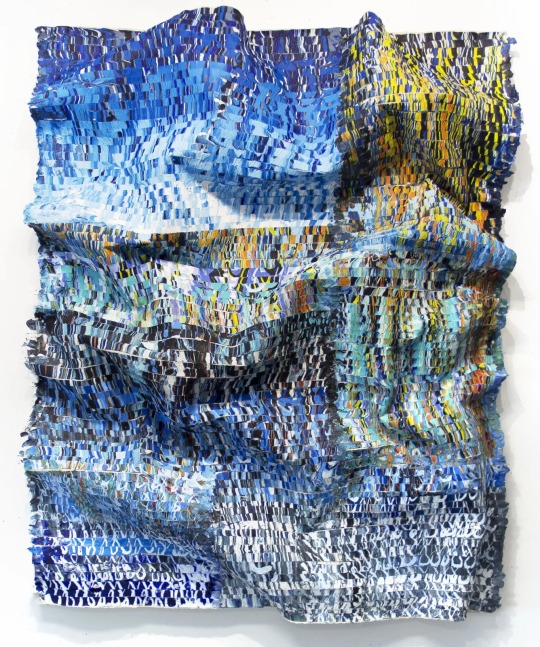
Kenny Nguyen Infinity No. 1, 2021 Silk Fabric, Acrylic, Canvas Mounted on Framed Canvas, Threads 60 × 48 × 5 in
19 notes
·
View notes
Text

Princess Charlotte of Wales (1796-1817)
Artist: After George Dawe (English, 1781-1829)
Date: c. 1817-1825
Medium: Oil on canvas
Collection: Royal Collection Trust, London, United Kingdom
Princess Charlotte of Wales
Princess Charlotte of Wales (Charlotte Augusta; 7 January 1796 – 6 November 1817) was the only child of George, Prince of Wales (later George IV), and Caroline of Brunswick. She was expected to ascend the British throne after the deaths of her grandfather, George III, and her father, but died in childbirth at the age of 21, predeceasing them both.
#portrait#sitting#three quarter length#chaise lounge#blue silk russian style dress#white undergarment#star of the order of st catherine#portfolio#etchings#elegant#red curtain#distant landscape#column#drapery#british royal family#british empire#british monarchy#british history#princess charlotte of wales#female figure#painting#oil on canvas#fine art#oil painting#artwork#english culture#english art#george dawe#english painter#19th century painting
13 notes
·
View notes
Text

Queen Victoria (1819-1901)
Artist: Franz Xaver Winterhalter (German, 1805-1873)
Date: 1842
Medium: Oil on canvas
Collection: Royal Collection Trust, London, United Kingdom
Queen Victoria
Victoria (Alexandrina Victoria; 24 May 1819 – 22 January 1901) was Queen of the United Kingdom of Great Britain and Ireland from 20 June 1837 until her death in January 1901. Her reign of 63 years and 216 days, which was longer than those of any of her predecessors, constituted the Victorian era. It was a period of industrial, political, scientific, and military change within the United Kingdom, and was marked by a great expansion of the British Empire. In 1876, the British parliament voted to grant her the additional title of Empress of India.
#portrait#half length#queen victoria#white silk and lace evening dress#jewelry#sapphire and diamond brooch#tiara#neclace#locet#spray of roses#landscape#british empire#british history#british monarchy#queen of the united kingdom#queen of ireland#great britain#victorian era#british queen#painting#oil on canvas#fine art#oil painting#artwork#german culture#german art#franz xaver winterhalter#german painter#european art#19th century painting
2 notes
·
View notes
Text













#VISVIM#FKT Runner Suede-Trimmed Canvas Sneakers#$1#285#Coach Leopard-Print Cotton-Moleskin Trimmed Wool and Silk-Blend Twill Jacket#$2#950#Embroidered Cotton-Chambray Shirt#$780#Skagway Leather-Trimmed Canvas High-Top Sneakers#$885#Skagway L.T. Lo Leather-Trimmed Canvas Sneakers#$876#Social Sculpture 101 Raw Denim Jacket#$810
5 notes
·
View notes
Text
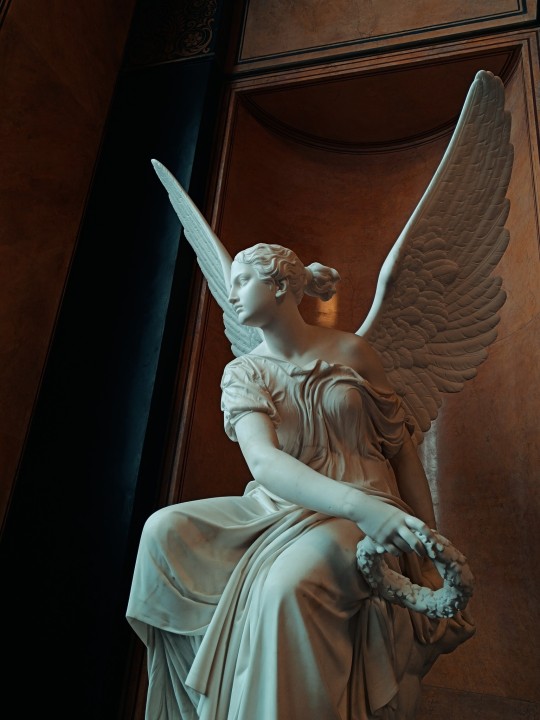


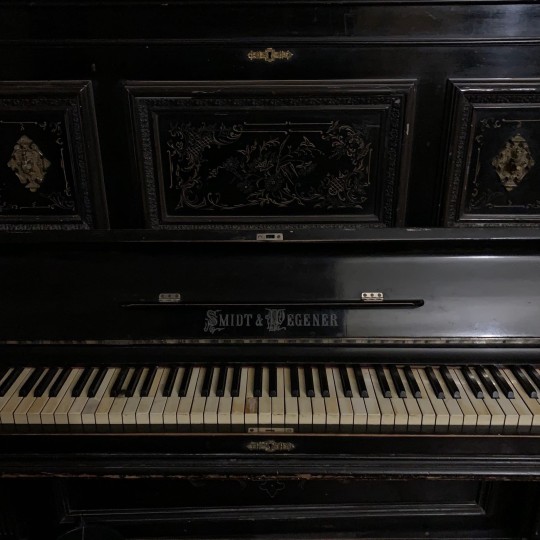
by peace or by war, the heart always wins
#love#hope#art#dark academia#light academia#books#dark acadamia aesthetic#piano#piano music#violin#cello#classical piano#silk#silk blouse#skirt#dress#pearls#painting#acrylic#canvas#paper
31 notes
·
View notes